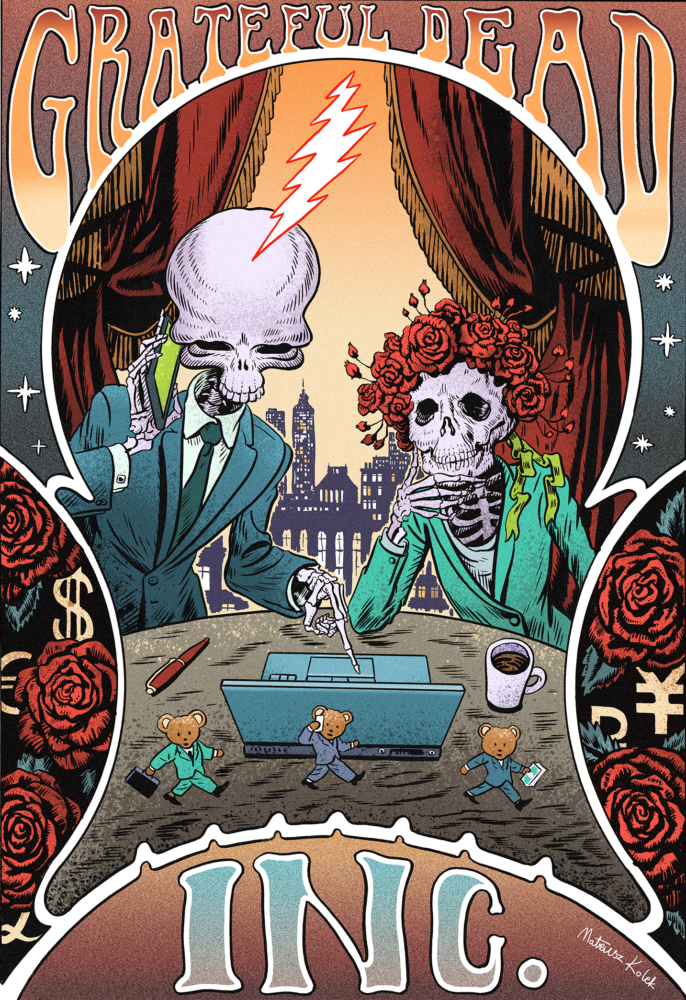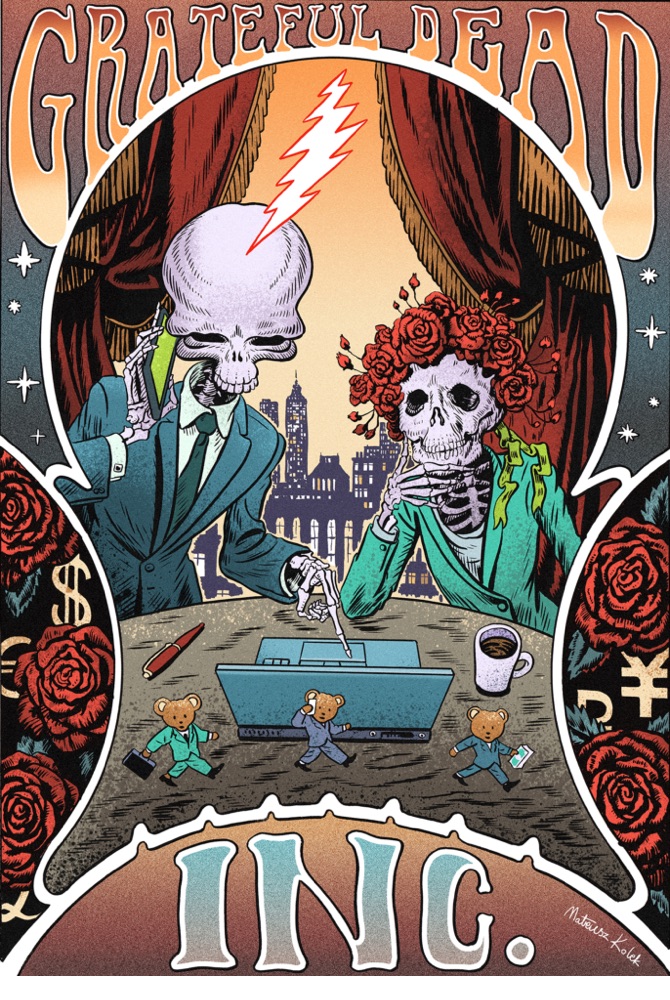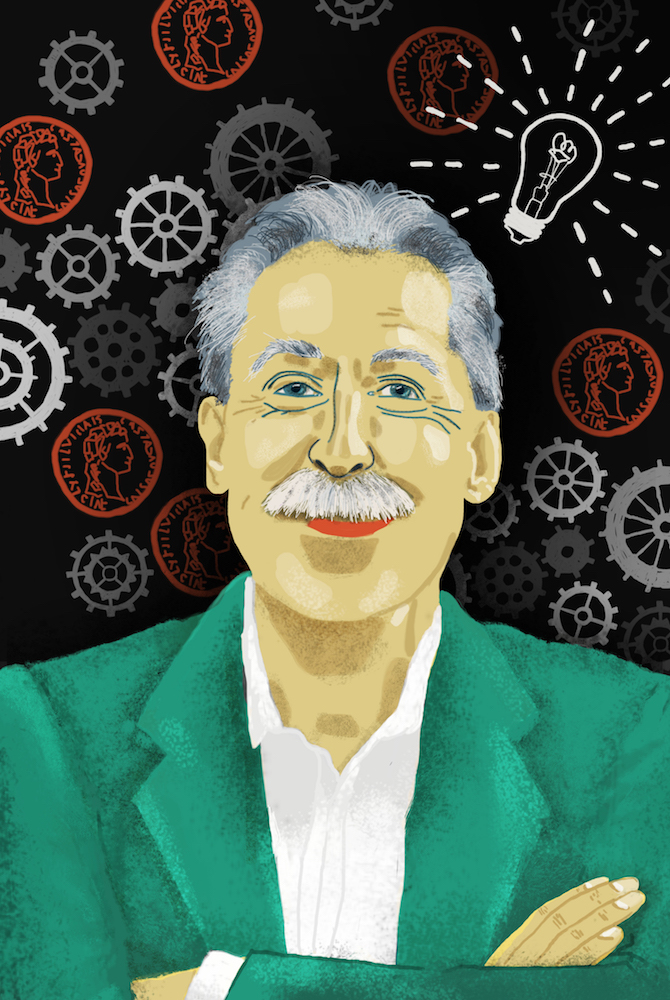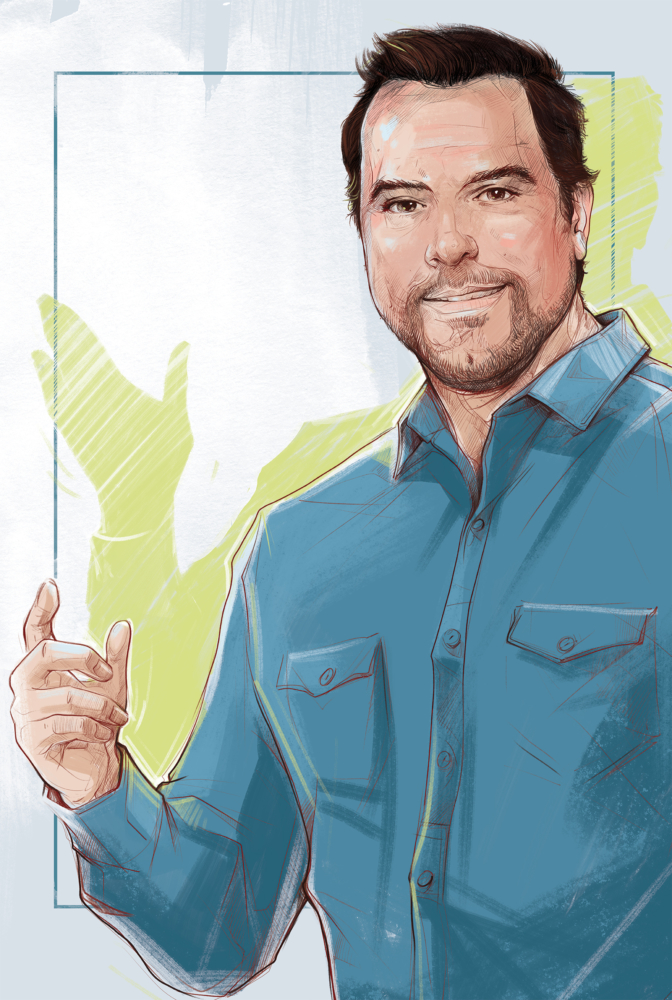 Discover how the legendary rock band, The Grateful Dead, influenced Barry Barnes to devise a transformative business model that demonstrates how to consistently provide a superb experience for customers.
Discover how the legendary rock band, The Grateful Dead, influenced Barry Barnes to devise a transformative business model that demonstrates how to consistently provide a superb experience for customers.
Let’s go ahead and dive right in: How did this group of anti-materialistic hippies create such a powerful business model and such a long-lasting career?
Improvisation and hard work, built over time. When they band first got together in the mid-60s, the music business hadn’t really “started” yet. There was no concert touring to speak of; big bands and symphonies would play, but there wasn’t any “rock and roll” as we know it today. The San Francisco, New York and LA scenes only came to be in the late 60s; that was when the record companies finally started to realize that rock and roll had something to say; and that music and artists could be commodified and capitalized on. That’s when record companies got busy signing artists.
The Grateful Dead resisted that until 1968 when they signed with Warner Brothers—but they were never happy with Warner Brothers for the length of their five-year contract. They didn’t think Warner Brothers understood who they were, what they were doing, why they were doing it, or anything about them. Warner Brothers did the best they could, and they did a lot of good things for The Dead. But, by 1973 when their contract was up, they had already decided they were going to create their own record company. (And they meant a true record company, not like The Jefferson Airplane had done with their record label under RCA, or The Beatles with Apple. Those were all just a name, and not really a record company—they didn’t press their own records. The Grateful Dead did it from scratch.)
But, in terms of your broader question and how they did it—they didn’t do it on purpose. They had no desire to be a business, really. In fact, there was a 1980 internal report that was developed at Garcia’s request by one of the folks that was not a musician but was part of the business side of The Grateful Dead. Garcia wrote a beautiful introduction to this particular report on who The Grateful Dead was, how they did what they did, and who was doing what.
They were really suffering financially in 1980, and they weren’t sure whether they could continue or not. Garcia famously stated, “We do business the way artists do business. The reason there’s a Grateful Dead production is because the State of California requires that we identify ourselves as a business. We have to fulfill the standard formalities of operating as a business, but The Grateful Dead is a 24 hour a day living reality. It doesn’t matter where we are when we’re doing it, we’re always doing it. This report that I commissioned sets out to distinguish the different kinds of of work we do. We have it all covered. We need to appreciate the parts each of us plays in how to fulfill it.”
“We do business the way artists do business.” That’s the bottom line for The Grateful Dead. So they stayed artists the whole 30 years. They did it their way. Sometimes, it was very expensive their way, like with the record company, which ended up costing them a whole lot of money. But, because of the money they had spent and burned through trying to do it their way, they came to know all about the record business.
They realized very early on with the Warner Brothers contract that they weren’t selling records. They didn’t get any radio airplay. Their songs were too long to play on the radio, and they were an improvisational band, so that’s what they wanted to do. More than anything else, they wanted to play live music and they wanted to improvise, because they were so highly influenced by jazz musicians like Coltrane and Miles Davis and others in that same school, so that’s what they did.
They realized that, and they realized they had this growing fan base, and so they began to play more and more concerts up and down California. Then they realized they had a big audience in the East, so they would go to New York and the East Coast, and they built a huge fan base there as well. Then they began to realize they could sell tickets, and they could do so really do well. They got into another business and created their own in-house ticket service. With Garcia’s death, The Dead were, you know, “dead” by 1995. There was no internet in those days—and this was a whole different story—but they did so many things they intuitively understood would work in the 21st century. That’s why I wrote the book that I did.
You have to be able to improvise, to treat your customers right, to know what your values are, to make sure that they’re consistent with your customers and that you follow that through.
Putting it in a contemporary context—particularly in the tech world, The Grateful Dead in some ways were the first platform play. By developing the live act as a business, The Dead built a platform for others to create businesses on top of—whether it be people with tie-dye t-shirts or The Dead parking lot scene where there were falafel vendors, tape traders, people selling jewelry (or other substances). Given the band’s long-standing relationship with lyricist, tech innovator, and general Renaissance man John Perry Barlow as well as others who helped craft the Internet as we now know it—one has to ask, did The Dead accidently create the contemporary Silicon Valley?
Three years ago, I wrote an article that got published in an academic journal where I compared the leadership styles of Garcia and Steve Jobs, and looked at the remarkable similarity in their backgrounds. Jobs was from the San Francisco Bay Area, known as Silicon Valley. He was highly influenced by LSD—it opened his mind to the point where he could see things that you and I can’t see. Garcia was the same way, and so was the band, they embodied this whole idea of being improvisational, both business-wise as well as musically.
Both Jobs and Garcia could sell people on their view, their perspective—this vision of the future that they could see—and it really did influence the tech world. They both had this approach of staying ahead of the curve, creating anticipation for what they’d do in the future. Certainly, Apple has that in spades, and certainly, The Grateful Dead did, too. There was nothing better than ordering your tickets in advance and salivating until it was time for the show to begin.
You mentioned the parking lot scene—t-shirt business, grilled cheese sandwiches in the parking lot—you name it, it was all available there. That was really The Grateful Dead being kind to their customers. They allowed people to borrow their logo—unless you got into selling ten thousand t-shirts, that was a whole different story.
But the thing that they didn’t want to do ever was to tell people what to do. They didn’t want anyone telling them what to do, and they certainly didn’t want to tell their fans what to do. They didn’t want to be cops—they wanted to be musicians.
In some cases, in some ways of looking at this, they got into a business where at the time it was created, business was the last thing they would think in terms of, until they got large enough where their fan base was big, and there was all this huge parking lot scene that continued to grow until they stopped performing in ’95. When they would hire somebody like an attorney, who understood them and told them, “Hey you’re giving away, you’re losing a lot of money—not that you’re interested in money, necessarily, but you’re giving it away in the parking lot by allowing people to do this.”
This was the ’80s before they decided they needed to “clamp down,” which they didn’t really do. After ’87, when they peaked with Touch of Gray, they started recruiting some of the best t-shirt makers in the parking lot, and they would bring them under brand of The Grateful Dead—so they were official t-shirts, made by these outsider artists. They would bring them into the fold, if you will. Very, very entrepreneurial—that’s what they did better than anything else in my view, and they had this 30-year career, as you’ve already mentioned. They continued to grow their audience all 30 of those years. It’s hard to believe, and it’s actually what led to their downfall: they had too many people.
They were dedicated to customer service in a way that we hardly see anyone delivering today…“How in the world am I, a guy from Kansas City, in 1985, with tickets in his hand to go see a show in the Bay Areas?” They made it easy for me.
One of the things you hear repeatedly, particularly if you go to tech and innovation conferences, is the importance of learning from failure. I was thinking back to the story of how The Grateful Dead had serious financial troubles, most notably with the late drummer Mickey Hart’s dad, who was managing them for a time. He had stolen all their money and they had to start from scratch again. So, what’s your opinion on the band serving as a model for learning from failure and adapting their business to not just survive but to thrive?
That’s one thing Silicon Valley folks and the high tech folks certainly understand now: you have to learn from your mistakes. You can’t fire somebody because they made a mistake. No. You have to ask: What did you learn? How do you make sure you don’t do that again? How do you improve so you get the results you’re really looking for? That’s the key to strategic improvisation. Corporate America just doesn’t adapt or pivot well. They’ve got these policies and procedures, and goddammit, you’re going to follow them or you’re out of here, okay?
When I interviewed Don Healy, the sound man for The Dead, he told to me about the “wall of sound” and the challenges of creating this beast of a sound system. I was fortunate enough to see the wall of sound in Des Moines, Iowa in June of ’74 at my first show, and it was monstrous. It was unbelievable, and it was so expensive—sound technology today has yet to equal the sound technology of the “wall of sound” in 1974. The Dead put all their money—everything they earned—into research and development. They were so in tune with their audience and their customers. They sent out a regular newsletter that you could sign up for, and there was one they released in ’73 that said, “Hey, here’s how much money we made last year, and here’s how we spent it all.” Talk about transparency. They explained that all the money they made in addition to the label (which wasn’t all that much) would go back into developing concert sound technology. Why? “Because we want our fans to hear it the way it should be heard—perfectly. And we want nothing less for our fans.” Perfecting the wall of sound took up a lot of time and the band’s resources—in 1974, they were losing money on every show they played. Not only did they have the monster of equipment that was the wall of sound, but the giant thing required its own stage because it was so heavy. And they had to have two of them!
They were dedicated to customer service in a way that we hardly see anyone delivering today. That was the thing that got my attention to begin with. When I saw them at the 20th anniversary shows, I had this epiphany, which later caused me to write the book: “How in the world am I, a guy from Kansas City, in 1985, with tickets in his hand to go see a show in the Bay Areas?” They made it easy for me. This was before any band or music booking company had thought to do this. There was no Ticket Master, no online service, no call-in numbers. All ticket buying was local; you had to wait in a line outside of a venue or call one of two designated phone lines to get concert tickets. The Dead changed all that—they pioneered it.
That was in the early to mid ’80s—and remember, this was pre-computer times. They created Grateful Dead Ticket Sales, a free hotline that you could call in to find out the East Coast schedule and the West Coast schedule for their upcoming tour. They had these wonderful mail order instructions. Again, this was all pre-computer, so you had to do it on 3×5 cards and send in a money order to get your tickets, but it was worth it. They did that throughout their entire career, and even for the 50th anniversary farewell shows.
Barlow refers to the taping decision as “the best decision we never made.“…They were never in a hurry to make a snap decision about anything
I’d like to talk about the sense of community that the band created. I went to my first Grateful Dead show in high school in the ’80s and saw them through Garcia’s death in 1995. After that, I saw members of The Dead play with their new bands, some reunion shows and I still go to see them today as Dead and Co., which for those who don’t know is a mix of the old band members with new players such as John Mayer.
What’s amazing to me is that all those pieces of the audience that have been collected over the decades spanning the Dead’s career are still there. At any show, you can see audience members from the Pigpen years (late ’60s to early ’70s)—a lot of them are retirees now. You see these people who are doctors, school teachers and tech executives who got into the band in the ’70s and ’80s, when they were attracting a mix of later-stage hippies and prep school dudes with popped collars and a penchant for drugs. Then, there are the later-stage fans who fell in love with the band after their last hit record “A Touch of Grey” came out in 1987-88. And when I see the Dead & Co. shows today, I see brand new fans—thousands of kids who weren’t even alive when the original band was together. How did they manage to keep building on that community, while also keeping it cohesive?
That’s a really great question to ask as that’s what I’m currently focusing on in my research. I’ve submitted a paper for this ongoing Grateful Dead Scholars Caucus (a series of academic journals and conferences) that meets once a year in Albuquerque. (You might also be interested to know the Grateful Dead even have their own archivist.) The abstract I submitted and has been accepted is titled ‘The Grateful Dead’s Sustainability and the Experience Economy.’ It’s become very clear to me that even though the band itself is dead, there is this beast—this tribe they created—a community of Deadheads, that is alive and well, and even growing, for heaven’s sake, as you just pointed out. So, the community is bigger than ever and it’s just as voracious in its appetite for more and more “experience.” I’d go so far as to say it’s on the level of a religious experience—to see The Grateful Dead or Dead and Co., in particular, or tribute bands like Dark Star Orchestra or JRAD. Basically every city of any size has at least one Grateful Dead cover band. Why? Because of this hunger they created.
How did they do this? By providing the absolute best customer service you can possibly have. It’s based on multiple interdependent lessons that all fit together nicely—I pinpointed 10 of them in my first book on the Dead that was published seven years ago. But you can’t just pull one of them and focus on it, and think you’ll create this magic effect. It doesn’t work like that—you have to be able to improvise, to treat your customers right, to know what your values are, to make sure that they’re consistent with your customers and that you follow that through. You have to make it easy for your customers to “touch” the band itself—you have to be accessible. You have to lead in a way where everybody is willing to lead at the same time, just like they did musically and organizationally.
You have to recognize that they were providing something really special in terms of the experience, and nobody has done it better—at least, for me. That doesn’t mean everyone will like the The Grateful Dead or agree with me on that. Garcia famously said, “The Grateful Dead is a lot like licorice. Not everybody likes licorice. But the people who like licorice really like licorice.”
So in terms of how they did it—like I said, it’s all those intertwined, interdependent lessons that work together to create this amazing experience that you just can’t find anyplace else. When you deliver it like that consistently, people will be lifetime customers, and beyond. And that’s basically what’s happened with cover bands and Dead and Company—it’s like a live continuum of what the band initially created.
Bob Weir (of the Grateful Dead, and Dead & Co. band leader) said of one time he was onstage playing with the Dead and Co., “I looked over at John and he looked old. I saw him look grey and have my beard, and I saw these new guys that were never on the stage before, and I realized that this band never has to go away. It can exist for eternity with interchangeable parts, as long as they know the lessons in what we’re trying to do and keep playing this kind of music.” So it’s a matter of making that platform concept of something that is constantly transformative and adapted, as long as the basic rules are adhered to.
Absolutely, and Mayer said pretty much the same thing on the Charlie Rose show, “This will always be a part of my life, I can see myself leading this group,” and, “After the survivors are gone, I can see this continuing. It has to continue.” If you think about it, that’s some pretty magical stuff. Who wouldn’t want a customer base like that? Lifetime customers who demand our product, who can’t get enough of our product or service? Holy mackerel! How do we do that? Well, pay attention. Don’t skimp, listen to your customers, make it easy for them to contact you, give stuff away. That’s what The Dead did—if you paid for the ticket, you owned the music. Just don’t sell it.
Who wouldn’t want a customer base like that? Lifetime customers who demand our product…How do we do that? Well, pay attention. Don’t skimp, listen to your customers, make it easy for them to contact you, give stuff away.
As The Dead have been known for improvisation, how much of their decision making came out of experimentation as opposed to well-thought out, planned moves? How much of their business decisions came from cold-blooded decision making versus creating something on the fly?
Well, for an example, let’s look at allowing fans to tape their concerts. As I mentioned earlier, the last thing The Grateful Dead wanted to do was tell their fans what to do. They knew audience members were taping their concerts. Nobody else allowed folks to tape. But was there a decision to allow tapers? They didn’t bother to do anything about it officially until 1984, when they created the taper’s section. And they did that because other fans were complaining about the tapers that were spread out in the audience, constantly saying, “Shut up over there, I’m trying to record this!” They had so many complaints about tapers shushing people in the audience that they created their own taper’s section, with taper tickets. Garcia and The Dead understood how important it was for fans to take the music home with them. They were performances that would never be heard or experienced again, so they understood that.
Barlow refers to the taping decision as “the best decision we never made.” It just evolved over time. This is really pretty much The Grateful Dead—so many of the decisions they made, they put off until the last minute when it was clear that they were either allowing this to happen or not, whatever “it” happened to be.
I spent a lot of time in The Grateful Dead archive in Santa Cruz. They had a large collection of business meeting notes. That’s pretty typical. They would raise an issue in a given month’s meeting, and then it would be be three, six, nine, or 12 months later that they would finally, declare, “This is the decision we ultimately made.” They were never in a hurry to make a snap decision about anything—at least from what I saw.
I’d love to talk about your new book, as it’s also become a part of this continuum of the Dead.
The name of the book is ‘The Grateful Dead’s 100 Essential Songs: The Music Never Stops.’ I co-authored it with a good friend of mine from the Grateful Dead scholars caucus, Bob Trudeau. We realize that not everyone will agree 100% with our list of 100 essential songs, although I think most serious Deadheads would agree with 90% of it, at least.
It’s an interactive book, which means that for each of the 100 songs, we provide either links to the lyrics, an anecdote or a related experience, or multiple recommended versions of a particular song. The process looks a bit different depending on if you have the ebook or the hard copy, but the idea is that the book enables you to have a layered experience—by listening to the song while you’re reading about it, or by discovering lyrics or related anecdotes, stories or experiences. We’ve tried to highlight little known stories about the way a song was written or issues between Hunter and Weir, for example, or some things that Jerry might have said about this, or Hunter said about that. We believe that the book will resonate with Deadheads, and go on to serve as a reference book like a ‘Deadbase’—one of many books that you should have on your bookshelf if you’re a serious fan. The intent was also to reach newbies, so we have this quick start guide that points readers to songs they could start off with based on what genre they’re into.
Barry Barnes is a retired business professor and author of Everything I Know About Business I Learned from the Grateful Dead. He continues to teach the importance of leadership, strategy, and change.
Keep up with Barry on LinkedIn and Twitter.
Illustration by Mateusz Kolek.



